In today’s dynamic event landscape, crafting a successful event hinges on more than just captivating content and flawless execution. Understanding your audience is paramount. Who are the people attending your event? What are their interests, backgrounds, and motivations for attending?
Traditionally, event planners relied on intuition and experience to answer these questions. However, the digital age has ushered in a new era of event planning, empowered by the rich data attendees generate throughout their event journey. Event data analytics is the key that unlocks a treasure trove of audience insights, allowing you to move beyond guesswork and make informed decisions that resonate with your target demographic.
Beyond Guesswork: Leveraging Data Analytics for Informed Decisions
By leveraging event data analytics, you gain a comprehensive understanding of your audience. This empowers you to:
- Craft a targeted event experience: Tailor content, speaker selection, and networking opportunities to align with attendee interests and preferences.
- Optimize marketing efforts: Gain valuable insights into which marketing channels resonate most with your target audience, allowing you to allocate your marketing budget more effectively.
- Measure event ROI: Quantify the return on investment for your event by analyzing key metrics like attendee engagement and lead generation.
Data analytics empowers you to transform event planning from an art form into a data-driven science. By delving into the wealth of information attendees provide, you can gain a deeper understanding of who they are, what they value, and how to create an event experience that exceeds their expectations.
In the next section, we’ll delve into the world of event data analytics, exploring the various data sources that can be harnessed to gain valuable audience insights.
Understanding Event Data Analytics: A Goldmine of Information
Event data analytics may sound complex, but at its core, it’s the practice of collecting, analyzing, and interpreting data generated throughout the event lifecycle. This data paints a vivid picture of your audience, their behavior, and their preferences.
Here’s a breakdown of what event data analytics entails for event planners:
Demystifying Event Data Analytics:
Event data analytics doesn’t require advanced coding skills or a background in data science. Most event management platforms offer user-friendly reporting dashboards that translate complex data sets into clear, actionable insights. These reports are typically presented in visual formats like charts and graphs, making it easy to identify trends and patterns within your attendee data.
Data Sources: Capturing Valuable Insights Throughout the Attendee Journey
The beauty of event data analytics lies in its ability to capture information at every touchpoint throughout the attendee journey. Here are some key sources of event data:
- Registration data: Information collected during the registration process provides valuable demographic insights such as attendee location, job title, and industry affiliation.
- Website analytics: By tracking website traffic and user behavior, you can gain insights into which event pages received the most attention, what content resonated with potential attendees, and which marketing channels were most effective in driving registrations.
- Ticketing data: Ticket sales data reveals which sessions or workshops are most popular, allowing you to tailor future events based on attendee preferences.
- Event app data: If you utilize an event app, data collected through the app can be incredibly insightful. This might include session downloads, networking interactions, or engagement with polls and surveys conducted during the event.
- Social media data: By monitoring social media conversations surrounding your event hashtag or industry keywords, you can gauge attendee sentiment, identify areas of interest, and track brand mentions.
By harnessing data from these various sources, you can develop a comprehensive understanding of your audience, their needs, and their overall event experience. In the next section, we’ll explore how to leverage this data to identify attendee demographics and tailor your event accordingly.
Using Data to Identify Attendee Demographics
Understanding the makeup of your audience is crucial for crafting a successful event. Event data analytics empowers you to move beyond assumptions and gain a clear picture of your attendee demographics. Here’s how to leverage data to identify who your attendees are and tailor your event experience to resonate with them:
Unveiling Your Audience: Geographic Distribution and Background Information
Registration data is a goldmine of demographic information. By analyzing this data, you can identify:
- Geographic distribution: Where are your attendees coming from? Understanding the geographic makeup of your audience allows you to tailor marketing efforts to specific regions, optimize speaker selection based on regional interests, and even plan for logistical considerations like catering or venue amenities.
- Industry affiliation: Which industries are most represented among your attendees? This information allows you to curate content and workshops relevant to their specific industry challenges and interests. For instance, if a significant portion of your attendees hail from the marketing technology sector, incorporating sessions on the latest marketing automation tools or social media trends would likely be well-received.
- Job titles and seniority levels: Understanding the job titles and seniority levels of your attendees allows you to tailor the content complexity and presentation style accordingly. For instance, a session geared towards entry-level professionals might benefit from a more foundational approach, while a session aimed at senior executives might delve deeper into strategic considerations.
By analyzing this demographic data, you gain a clear picture of the people attending your event. This empowers you to craft a program that caters to their specific needs and professional backgrounds.
Analyzing Demographics: Tailoring Your Event to Better Serve Your Attendees
Once you understand your audience demographics, you can leverage this knowledge to create a more targeted and relevant event experience. Here are a few examples:
- Content curation: Develop a program that features speakers and topics that resonate with the interests and challenges faced by your specific audience.
- Networking opportunities: Facilitate networking opportunities that connect attendees with similar industry backgrounds or job titles. Event apps with networking features can be particularly helpful in this regard.
- Marketing and outreach: Tailor your marketing messages and outreach efforts to resonate with the specific demographics you’re trying to attract. For instance, you might utilize different social media platforms or adjust the tone of your marketing copy depending on the target audience’s age or industry affiliation.
By leveraging attendee demographics, you can ensure your event provides genuine value to all participants. In the next section, we’ll explore how to utilize data to understand session preferences and optimize your event agenda accordingly.
Using Data to Understand Session Preferences
Crafting an engaging event agenda is paramount to attendee satisfaction. However, it can be challenging to predict which sessions will resonate most with your audience. This is where event data analytics steps in, empowering you to move beyond guesswork and identify session preferences based on concrete data.
Decoding Session Popularity: Identifying Attendee Interests Through Data
Several data points can shed light on which sessions pique attendee interest. Here are a few key metrics to analyze:
- Registration data: During the registration process, many event platforms allow attendees to pre-select the sessions they plan to attend. Analyzing these selections provides a clear indication of which sessions have generated the most interest.
- Ticketing data: If your event offers paid workshops or breakout sessions, analyzing ticket sales data reveals which sessions attendees are willing to invest in, indicating a high level of interest.
- Event app data: If you utilize an event app, track session downloads or session ratings and reviews. Attendees often download materials or leave feedback on sessions they find particularly valuable or insightful.
- Social media buzz: Monitor social media conversations surrounding your event hashtag or specific session topics. A high volume of mentions or discussions related to a particular session can indicate strong attendee interest.
By analyzing this data, you gain valuable insights into which sessions resonate most with your audience. This empowers you to make informed decisions about future event agendas.
Optimizing Your Agenda: Leveraging Data to Craft Content Your Audience Craves
Once you understand which sessions resonate with your audience, you can leverage this knowledge to optimize your event agenda for future events. Here are a few ways to utilize data insights:
- Prioritize high-performing sessions: Sessions with consistent popularity across multiple events can be considered core offerings and scheduled during prime timeslots.
- Refine or revamp underperforming sessions: Analyze feedback or low attendance data for underperforming sessions. Consider revamping the content, speaker selection, or session format to improve engagement.
- Introduce new sessions based on attendee interest: Data might reveal emerging trends or topics of interest within your audience. Introduce new sessions that cater to these evolving needs and keep your event program fresh and relevant.
By using data to understand session preferences, you can curate an agenda that keeps attendees engaged and ensures they leave the event with valuable insights and knowledge. In the next section, we’ll delve into how event data analytics can help you understand networking preferences and foster meaningful connections among your attendees.
Using Data to Analyze Networking Preferences
Event networking is a crucial element for many attendees, fostering valuable connections and professional growth. However, creating opportunities for genuine connections can be challenging. Event data analytics can shed light on how attendees prefer to network at your events, empowering you to optimize the networking experience.
Networking Insights: Understanding How Attendees Connect at Your Event
Several data points can provide valuable insights into attendee networking preferences. Here’s how to leverage event data to understand how attendees connect:
- Event app data: Many event apps offer networking features that allow attendees to connect based on shared interests or industry affiliation. Analyze how attendees utilize these features to identify preferred networking methods.
- Session attendance data: Look beyond just session popularity. Analyze if attendees consistently attend sessions with similar themes or speakers. This might indicate a desire to connect with others who share specific interests.
- Social media data: Monitor social media conversations surrounding your event hashtag. Are attendees using the platform to express a desire to connect with others in specific industries or with similar job titles?
By analyzing this data, you can gain a deeper understanding of how attendees prefer to network at your events and the types of connections they seek.
Fostering Connections: Utilizing Data to Enhance the Networking Experience
Once you understand attendee networking preferences, you can leverage this knowledge to create a more facilitating environment. Here are a few ways to use data insights:
- Targeted networking opportunities: Facilitate networking sessions that connect attendees with similar interests or backgrounds based on data gathered through event registration or app usage.
- Icebreaker activities: Develop icebreaker activities or conversation starters that encourage interaction based on data-driven insights into attendee preferences. For instance, if data suggests many attendees are interested in a specific industry trend, consider an icebreaker activity that prompts them to share their thoughts on the topic.
- Pre-event networking tools: Utilize features within your event app or online platform to allow attendees to connect and schedule meetings before the event, catering to those who prefer to plan their networking interactions in advance.
By leveraging attendee data, you can move beyond generic networking opportunities and create a more targeted and engaging experience that fosters meaningful connections and maximizes the value proposition of your event. In the next section, we’ll explore how event data analytics can help you gauge attendee engagement levels and optimize your event for maximum participation.
Using Data to Gauge Engagement Levels
Engagement is the lifeblood of a successful event. It’s not enough to simply get attendees through the door; you want them to actively participate, absorb information, and leave feeling like their time was well spent. Event data analytics empowers you to move beyond assumptions and measure attendee engagement with concrete data.
Beyond Attendance Numbers: Measuring Engagement Through Data Analytics
Attendance numbers are a good starting point, but they don’t tell the whole story. Here are some key metrics to analyze to gauge attendee engagement:
- Session attendance patterns: Look beyond just total attendance numbers. Analyze how long attendees stay in sessions on average. Do they consistently attend full sessions, or is there a significant drop-off after a certain point? This can indicate a need to adjust session length or content pacing.
- Event app data: Many event apps allow attendees to participate in polls, quizzes, or Q&A sessions during presentations. Analyze participation rates in these features to gauge real-time engagement during sessions.
- Social media activity: Monitor social media conversations surrounding your event hashtag during and after the event. Are attendees actively sharing key takeaways, insights, or photos from the event? This can indicate a high level of engagement and attendee satisfaction.
By analyzing these data points, you gain a comprehensive understanding of how engaged your attendees are throughout the event experience.
Optimizing Engagement: Using Data to Drive Attendee Participation
Once you understand your attendee engagement levels, you can leverage this knowledge to optimize your event format and content for future iterations. Here are a few ways to use data insights:
- Interactive elements: Incorporate interactive elements like polls, quizzes, or live Q&A sessions into your presentations to encourage active participation from attendees.
- Varied session formats: Offer a mix of session formats, such as workshops, panel discussions, or breakout groups, to cater to different learning styles and preferences.
- Speaker selection: Analyze data to identify speakers who consistently generate high engagement through session attendance patterns or positive feedback received through the event app.
By using data to gauge attendee engagement, you can ensure your event offers a stimulating and interactive experience that keeps participants actively involved from start to finish. In the next section, we’ll explore how event data analytics can help you track your event’s return on investment (ROI) and demonstrate the value your event delivers.
Using Data to Track Event ROI
Event planning requires a strategic investment. Demonstrating the value proposition and return on investment (ROI) of your event is essential, especially if you rely on sponsors or stakeholders for funding. Event data analytics empowers you to move beyond guesswork and quantify the actual impact of your event.
Demonstrating Value: Measuring Return on Investment with Event Data
Several key metrics can be analyzed to demonstrate the success of your event and calculate your ROI. Here’s how to leverage data to track the value your event delivers:
- Lead generation: Track how many leads are generated through the event. This could involve analyzing registrations that include clear lead capture fields, badge scans at sponsor booths, or business cards collected during networking sessions.
- Sales conversions: If your event has a direct sales component, track how many sales are generated as a result of the event. This might involve offering attendees a unique discount code or tracking website traffic referred from the event hashtag.
- Post-event surveys: Distribute post-event surveys to attendees to gather feedback on their experience, the value they derived from the event, and their likelihood to recommend it to others.
- Social media reach and sentiment: Analyze the reach and sentiment of social media conversations surrounding your event. A high volume of positive mentions and a strong social media buzz can indicate a successful event that resonated with attendees.
By analyzing this data, you can paint a clear picture of the tangible outcomes generated by your event.
Data-Driven Decisions: Optimizing Your Event Strategy for Future Success
Event data analytics empowers you to make data-driven decisions that optimize your event strategy for future iterations. Here’s how ROI insights can be utilized:
- Refine marketing strategies: Analyze which marketing channels were most effective in driving registrations. Allocate your marketing budget more strategically in the future based on data-driven insights.
- Content and speaker selection: Prioritize content and speaker selection based on data that demonstrates which topics and presenters resonated most with attendees and generated the highest engagement.
- Demonstrate event value: Use ROI data to showcase the success of your event to sponsors and stakeholders. Quantifiable metrics can solidify your position when seeking future funding or partnerships.
By tracking event ROI, you move beyond anecdotes and assumptions and demonstrate the measurable impact your event has on attendees, your brand, and your bottom line. In the next section, we’ll conclude by discussing how SyncEvent empowers you to harness the power of event data analytics and transform your events into data-driven powerhouses.
The Power of Data-Driven Decisions for Event Success
The world of event planning is no longer shrouded in guesswork. By embracing event data analytics, you gain the power to transform hunches into insights and craft events that resonate deeply with your target audience. Imagine being able to:
- Develop a data-driven audience profile: Move beyond demographics and understand the nuanced preferences, needs, and motivations of your attendees.
- Craft a hyper-targeted event experience: Tailor content, speakers, and networking opportunities to ensure your event delivers exceptional value to every participant.
- Measure and optimize your event strategy: Track key metrics, analyze ROI, and continuously refine your approach to achieve even greater success with future events.
Event data analytics empowers you to become a data-driven event mastermind, transforming your planning process from an art form into a science.
Empower Your Events with SyncEvent Data Analytics
SyncEvent is your one-stop shop for harnessing the power of event data analytics. Our user-friendly platform goes beyond simple registration. We capture rich data throughout the attendee journey, providing you with a comprehensive understanding of your audience and their event experience.
SyncEvent’s intuitive dashboards translate complex data sets into clear, actionable insights. Empower yourself to make data-driven decisions about every aspect of your event, from content curation to marketing strategies.
Schedule a free demo today and discover how SyncEvent can transform your events into data-driven powerhouses that deliver exceptional value for attendees and measurable success for you.













